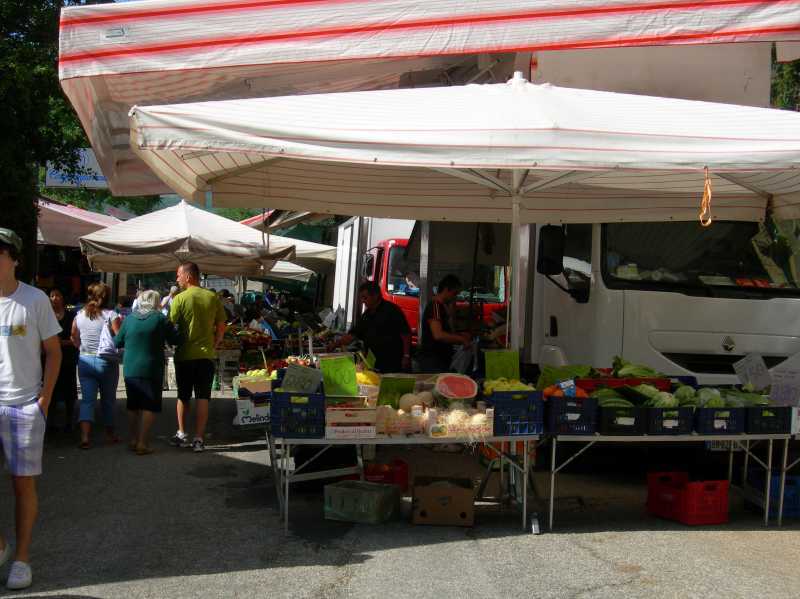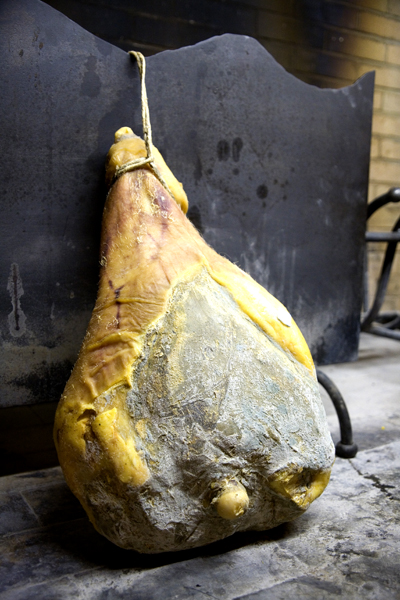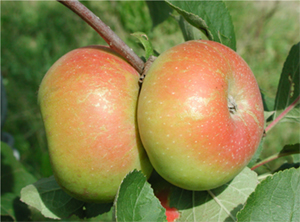The food you eat in the Marche is determined by the area you are in, whether it be the mountains or by the coast. There are a wide range of restaurants in each area offering typical food of the region mostly sourced locally. Should you wish to try your own hand at cooking each town also has a weekly market offering a wide range of fresh foods. These markets are a time for the community to come together - especially in summer - and great place to soak up the local atmosphere.

The countryside en route to the town Pieve Torino, Le Marche, Italy
Self-catering holiday apartments near the Sibillini Mountains in Le Marche, Italy


The inhabitants of the interior of Le Marche are reputed to be big meat eaters and certainly any festive occasion is marked with the consumption of a variety of meats with every course. According to one local restauranteur, who specialises in the historical aspects of Marche cooking, this has only been the case since about the 1970s. Previously the contadini (smallholders) had relied on courtyard animals such as chickens or pork for their main source of meat. Even today no part of the slaughtered pig is allowed to go to waste. It is from this that foods such as ciauscolo (a spreadable salami flavoured with garlic and vino cotto) and salame lardelleto have emerged. In the countryside the contadini traditionally cooked the meat over the wood fire used to heat their homes. In many restaurants meat is offered alla braccia, that is charcoal grilled.
Dishes of the countryside are strongly flavoured. Porchetta is an example, whole piglet roasted according to ancient tradition flavoured with fennel and garlic. Hunting in the winter provides a reliable source of wild boar. This is used to make wonderful casseroles or salami. Pigeon and rabbit are also often on the menu in this region. In the north of the Marche around Urbino, beef is popular with dishes such as tournados all Rossini and braccia di Urbino.

The Slow Food Movement is active in supporting locally produced foods in Italy. Click Here for a list of all foods in Le Marche currently being promoted by the Slow Food Movement.
One of these foods is - a locally made sheeps cheese. Pecorino cheese. The cheese is made using raw sheep milk and semi-cooked curds. According to the slow food website the flavour of the cheese can be attributed in part to the richness of the pasture in the Monti Sibillini. However the real secret of the cheese is the rennet, to which herbs and other ingredients are added according to well-guarded recipes. The cheese is sold in various stages of maturity. The really mature pecorino is used for flavouring dishes in much the same way as parmesan. The local Ricotta cheese is made after the pecorina from the residual whey. Casciotta is another locally made cheese worth trying. It is often made with a mixture of sheeps and cows milk, which has a milder flavour than Pecorino.

Another product local to Casa Carotondo recognised by the Slow Food presidium is the mela rosa - literally the pink apple. One of its main features is the strong resistance to plant diseases and insect pests, thanks in part to the altitude of cultivation, but mainly to the genetic characteristics of the fruit developed over the centuries. The mela rosa is an apple of small to medium size, somewhat flat, pink where exposed to the sun and yellowish-green elsewhere. These apples are picked at the end of September and throughout October. The taste actually improves with storage.

Tartufo (truffles) are to be found in many of the Marche mountain regions, so it is a popular, if expensive, flavouring for many dishes including vincisgrassi. This is a type of lasagne, containing liver, truffles and mushrooms, supposedly named after an Austrian captain fighting in the Marche on behalf of Napoleon. Le Marche is one of the few regions to produce all types of truffle - black and white - and the production is celebrated in a number of festas. The nearest to Casa Carotondo being the Diamanti a tavola in Amandola at the beginning of November.
The Ascolana olive is cultivated throughout the Marche. Larger than the average eating olive it is often served as an antipasti stuffed with a mixture of meats and deep fried in breadcrumbs.
Honey has been produced in this area since ancient times and is widely available. There are various flavours including acacia, thousand flowers and chestnut.

Should you venture away from the mountains to the coast fish is, of course, on the menu. The keynote dish is brodo (soup) for which each town has its own recipe. The many beachside restaurants along the Adriatic coast are excellent value in the fresh fish menus they serve.
The plateau in the Sibillini Mountains around the town of Castelluccio is actually in Umbria but most guests at Casa Carotondo visit the area. The plateau consists of three areas Pian Grande, Pian Piccolo, and Pian Perduto on which lentils are cultivated without chemicals. Castelluccio lentils are small, with a colour going from streaked green to light brown. The main attraction of this area is the flowering of the lentils in late June, which provides a spectacular display together with the many wild flowers.
For some le Marche recipes try the following websites: